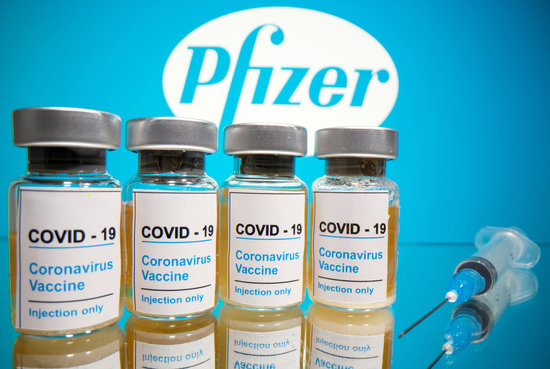Guide to differences between the Pfizer-BioNTech, Modern and Oxford-AstraZeneca vaccines
Oxford-AstraZeneca jab expected to be approved and rolled out in February

With the Oxford-AstraZeneca vaccine expected to be approved in February, what are the differences between the vaccines and why do we need three different ones?
The Pfizer-BioNTech vaccine was the first one approved by the EU, followed by the Moderna jab.
In Catalonia, the first Pfizer dose was administered on December 27, 2020 to Josefa Pérez in l’Hospitalet de Llobregat, a city directly south of Barcelona.
The Moderna and Oxford jabs could allow the acceleration of the administration of the vaccine rollout campaign, due to their different traits including storage temperatures and the maximum time allowed between doses.
“The Moderna vaccine can be used in community centers, whilst the Pfizer vaccine is more restricted to hospitals.” Penny Ward, an expert working for King’s College, told the Catalan News Agency (ACN).
Technology
One of the main differences between the vaccines are the technologies used.
The Pfizer and Moderna vaccines both use mRNA technology that generates immunity by teaching cells to produce a protein that develops antibodies.
Although there has been much debate on the rapidity with which these vaccines were released and the new technology used, research on mRNA vaccines has been ongoing since 2005. As well as this, the mRNA base is much quicker to develop than traditional vaccines.
In the Oxford vaccines, the virus has been genetically modified to generate an immune response.
Pfizer-BioNTech: mRNA technology
Moderna: mRNA technology
Oxford-AstraZeneca: genetically modified virus
Second dose
The Covid-19 vaccines need a booster dose, as do many vaccines, after the initial injection.
Time between second doses vary, with the Oxford vaccine allowing 4 to 12 weeks between doses, which is one of the reasons the Oxford vaccine is looked upon favourably.
The time span on the other vaccines are at 21-42 days for Pfizer, whilst this is at 28 day for Moderna, although the WHO is currently looking to see if this could be extended.
Pfizer-BioNTech: 21-42 days
Moderna: 28 days with investigation into longer time span pending
Oxford-AstraZeneca: 4-12 weeks
Efficacy
The efficacy of a vaccine describes the reduction of disease we see in those vaccinated compared to those non-vaccinated.
When looking at efficacy the statistics that are shown tend to highlight efficacy against symptomatic disease.
The Pfizer and Moderna vaccine average around a similar efficacy rate, whilst the Oxford vaccine has a lower rate, however experts affirm they all work well to immunize against Covid-19.
Pfizer-BioNTech: 95%
Moderna: 94.5%
Oxford-AstraZeneca: 60-90%
Storing temperatures
Although the Oxford vaccine has a lower efficacy rate, what makes it useful and interesting to the EU is its storing temperature.
Vaccines have proteins in them, and must be kept at a certain temperature in order to make sure these work.
For the Pfizer and Moderna vaccines these mean largely below zero degrees celsius, which makes it logistically very difficult to store.
This was one of the reasons the rollout of the vaccine was delayed in Catalonia, as the special freezers needed were stuck in the UK.
However, the Oxford vaccines can be stored at regular refrigerator temperatures, so despite the efficacy being lower it allows for quicker and wider distribution.
Pfizer-BioNTech: -70C
Moderna: -20C
Oxford-AstraZeneca: regular refrigerator temperatures
Price of doses
The cost of vaccine doses also vary, with the Oxford vaccine coming in cheapest at €1.78 and the Moderna vaccine reaching heights of €18 per injection.
Pfizer-BioNTech: €12
Moderna: €18
Oxford-AstraZeneca: €1.78
Doses bought by EU
The EU has bought a varying number of doses of the vaccine to distribute throughout member countries.
Pfizer-BioNTech: 600 million
Moderna: 160 million
Oxford-AstraZeneca: 300 million
Doses in Catalonia
The Spanish government has bought 1,139,400 doses as of January 18, 2021.
Of these, 185,820 have been given to Catalonia, with 180,000 being Pfizer and the rest Moderna doses.